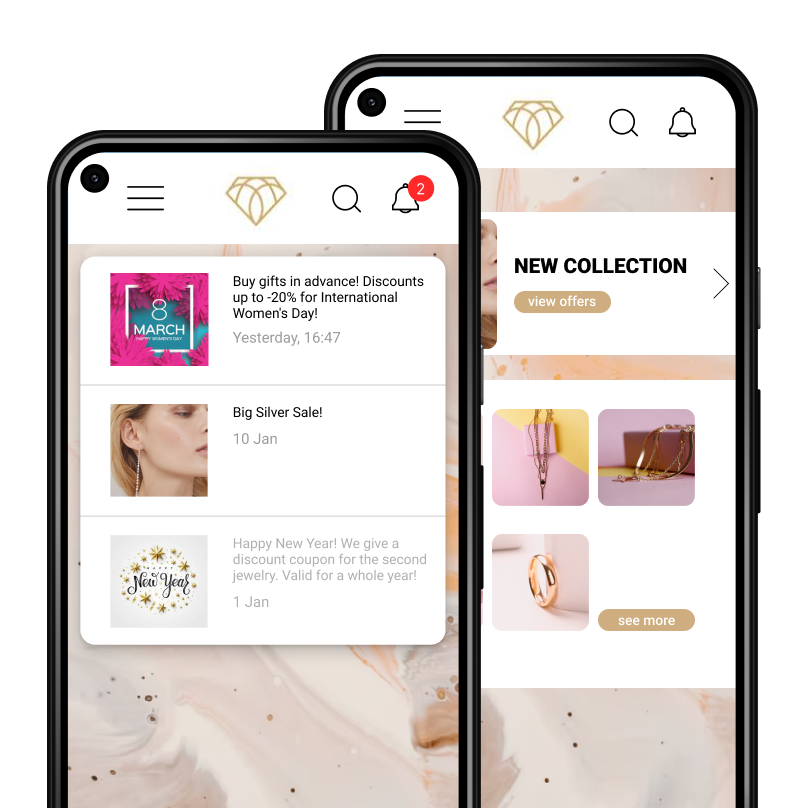App Inbox is similar to an email inbox but is designed for direct messages from an app. As opposed to push notifications, it allows customers to keep promotions and browse a chronological list of messages at any time.

With the Reteno App Inbox, there is no default UI. This means with a few lines of code, you can connect Reteno with your inbox.
NoteSDK Version App Inbox is available in version 1.2.0 and later.
Reteno App Inbox
To get an instance to the App Inbox object, you need to use the Reteno.inbox() call which you can see below:
let inbox: AppInbox = Reteno.inbox()Downloading new messages
// If `page` or `pageSize` is not specified, then all messages will be returned
// If `status` is not specified, all messages will be returned.
Reteno.inbox().downloadMessages(page: 1, pageSize: 10, status: .opened) { [weak self] result in
switch result {
case .success(let response):
// handle messages
self?.messages = response.messages
// or totalPages count `response.totalPages`
case .failure(let error):
// handle error
}
}Available statuses for downloading
public enum AppInboxMessagesStatus: String {
case opened = "OPENED"
case unopened = "UNOPENED"
}Reteno inbox message attributes:
public struct Reteno.AppInboxMessage {
let id: String
let createdDate: Date
let title: String
let content: String
let imageURL: URL?
let linkURL: URL?
let isNew: Bool
}Get inbox unread messages count
Reteno.inbox().onUnreadMessagesCountChanged = { count in
// handle changed count
}Change inbox messages status on OPENED
OPENEDReteno.inbox().markAsOpened(messageIds: ["message_id"]) { result in
switch result {
case .success:
// handle success
case .failure(let error):
// handle error
}
}Also you can change all inbox messages status via single method without providing messages ids.
Reteno.inbox().markAllAsOpened { result in
switch result {
case .success:
// handle success
case .failure(let error):
// handle error
}
}